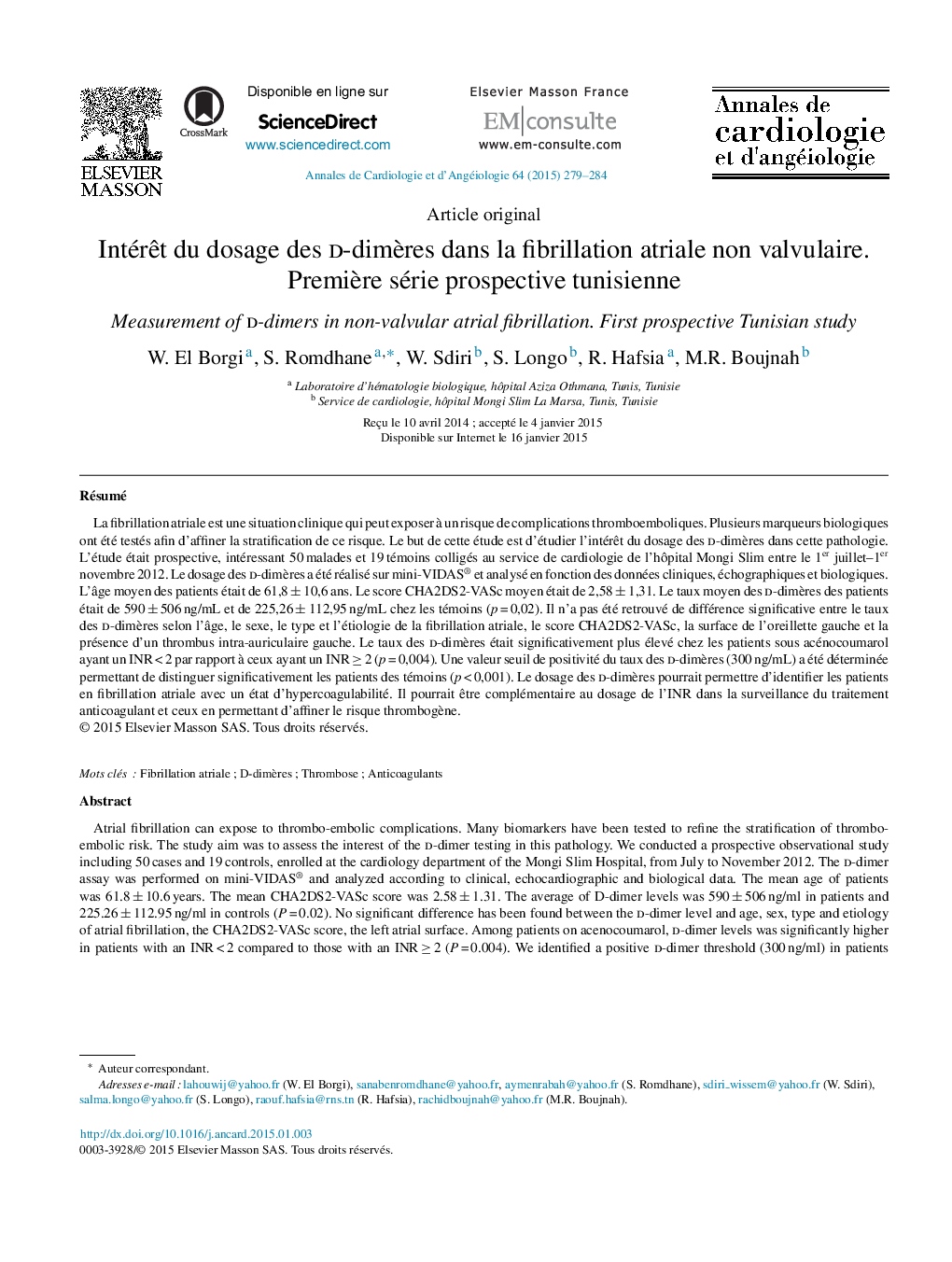| Article ID | Journal | Published Year | Pages | File Type |
|---|---|---|---|---|
| 2868524 | Annales de Cardiologie et d'Angéiologie | 2015 | 6 Pages |
Abstract
Atrial fibrillation can expose to thrombo-embolic complications. Many biomarkers have been tested to refine the stratification of thrombo-embolic risk. The study aim was to assess the interest of the d-dimer testing in this pathology. We conducted a prospective observational study including 50 cases and 19 controls, enrolled at the cardiology department of the Mongi Slim Hospital, from July to November 2012. The d-dimer assay was performed on mini-VIDAS® and analyzed according to clinical, echocardiographic and biological data. The mean age of patients was 61.8 ± 10.6 years. The mean CHA2DS2-VASc score was 2.58 ± 1.31. The average of D-dimer levels was 590 ± 506 ng/ml in patients and 225.26 ± 112.95 ng/ml in controls (P = 0.02). No significant difference has been found between the d-dimer level and age, sex, type and etiology of atrial fibrillation, the CHA2DS2-VASc score, the left atrial surface. Among patients on acenocoumarol, d-dimer levels was significantly higher in patients with an INR < 2 compared to those with an INR â¥Â 2 (P = 0.004). We identified a positive d-dimer threshold (300 ng/ml) in patients distinguishing them significantly with controls (P < 0.001). In conclusion, the measurement of d-dimers could help clinicians to identify patients with atrial fibrillation having an increased coagulability and, therefore, an increased thrombo-embolic risk. It could be complementary to the determination of INR in monitoring anticoagulation therapy: d-dimers level refines the thrombo-embolic risk and INR measurement assesses the level of anticoagulation and the bleeding risk.
Keywords
Related Topics
Health Sciences
Medicine and Dentistry
Cardiology and Cardiovascular Medicine
Authors
W. El Borgi, S. Romdhane, W. Sdiri, S. Longo, R. Hafsia, M.R. Boujnah,
